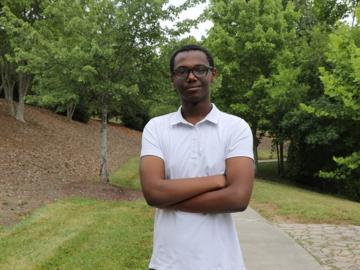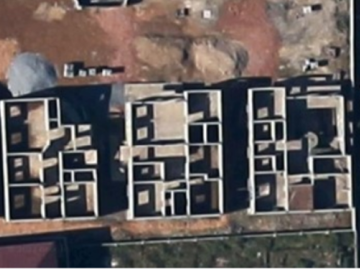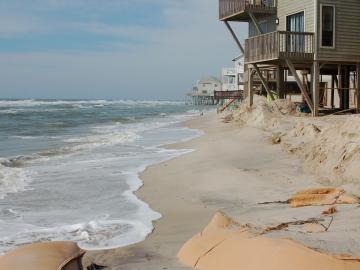
Filter News
Area of Research
- Advanced Manufacturing (1)
- Biology and Environment (5)
- Electricity and Smart Grid (1)
- Energy Science (23)
- Fuel Cycle Science and Technology (1)
- Fusion and Fission (3)
- Isotopes (2)
- Materials (34)
- Materials for Computing (4)
- National Security (31)
- Neutron Science (9)
- Nuclear Science and Technology (3)
- Supercomputing (17)
News Type
News Topics
- (-) Critical Materials (6)
- (-) Grid (34)
- (-) Materials Science (64)
- (-) National Security (63)
- (-) Physics (39)
- (-) Security (18)
- 3-D Printing/Advanced Manufacturing (60)
- Advanced Reactors (13)
- Artificial Intelligence (79)
- Big Data (50)
- Bioenergy (70)
- Biology (82)
- Biomedical (44)
- Biotechnology (26)
- Buildings (35)
- Chemical Sciences (37)
- Clean Water (17)
- Composites (12)
- Computer Science (117)
- Coronavirus (20)
- Cybersecurity (14)
- Education (2)
- Emergency (3)
- Energy Storage (37)
- Environment (124)
- Exascale Computing (51)
- Fossil Energy (6)
- Frontier (45)
- Fusion (40)
- High-Performance Computing (82)
- Hydropower (6)
- Isotopes (35)
- ITER (4)
- Machine Learning (40)
- Materials (53)
- Mathematics (9)
- Mercury (7)
- Microelectronics (3)
- Microscopy (27)
- Molten Salt (2)
- Nanotechnology (21)
- Neutron Science (85)
- Nuclear Energy (71)
- Partnerships (36)
- Polymers (12)
- Quantum Computing (35)
- Quantum Science (49)
- Simulation (44)
- Software (1)
- Space Exploration (13)
- Statistics (2)
- Summit (40)
- Transportation (35)
Media Contacts

Distinguished materials scientist Takeshi Egami has spent his career revealing the complex atomic structure of metallic glass and other liquids — sometimes sharing theories with initially resistant minds in the scientific community.
Summer interns at the Department of Energy’s Oak Ridge National Laboratory recently dove into various smart devices to better understand cybersecurity vulnerabilities posed by technology meant to simplify a user’s life.

On Feb. 15, 2024, the one billionth item, also known as an “occupancy,” was scanned at the Port of Aqaba, Jordan, one of the early sites where radiation detection equipment was installed. This milestone shows the extent of countries committed to preventing the spread of radioactive material through the amount of data volunteered to ORNL for continuous improvement. As adversaries push the limits of smuggling dangerous material, this collaboration pushes back through science-backed analysis.

Nuclear physicists at the Department of Energy’s Oak Ridge National Laboratory recently used Frontier, the world’s most powerful supercomputer, to calculate the magnetic properties of calcium-48’s atomic nucleus.

Elton Aba, an intern at the Department of Energy’s Oak Ridge National Laboratory, collaborated with researchers to explore an intriguing intersection: how biology can inform cybersecurity. Aba shared some of his findings on how biomimicry could help secure our nation’s critical infrastructure.

Mohamad Zineddin, a distinguished researcher in nuclear and radiological engineering, recently received the Roger Howsley Award for Excellence in Nuclear Security.
Researchers at ORNL recently demonstrated an automated drone-inspection technology at EPB of Chattanooga that will allow utilities to more quickly and easily check remote power lines for malfunctions, catching problems before outages occur.

Researchers at ORNL are using satellite images of homes under construction to address gaps in census data, especially in areas like Sub-Saharan Africa. By analyzing these images, they estimate dwelling sizes and population densities where traditional data is sparse. This method improves population estimates and supports national security by enhancing emergency response capabilities.

A study found that beaches with manmade fortifications recover more slowly from hurricanes than natural beaches, losing more sand and vegetation. The researchers used satellite images and light detection and ranging data, or LIDAR, to measure elevation changes and vegetation coverage. Changes in elevation showed how much sand was depleted during the storm and how much sand returned throughout the following year.

At ORNL, a group of scientists used neutron scattering techniques to investigate a relatively new functional material called a Weyl semimetal. These Weyl fermions move very quickly in a material and can carry electrical charge at room temperature. Scientists think that Weyl semimetals, if used in future electronics, could allow electricity to flow more efficiently and enable more energy-efficient computers and other electronic devices.


